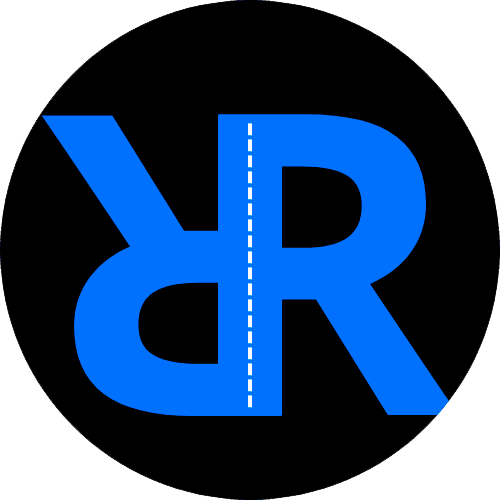SAP Transaction GLOB: A Comprehensive Guide for SAP Users
Welcome to our tutorial on SAP transaction GLOB, an important transaction code used in SAP Materials Management (MM) module. In this tutorial, we will provide you with a step-by-step guide on how to effectively use GLOB for global purchasing in your SAP system. Whether you are a novice SAP user or an experienced consultant looking for a refresher, this tutorial will equip you with the necessary knowledge to navigate through GLOB seamlessly.
Before we dive into the details, we’d like to introduce you to a valuable resource that can enhance your SAP MM skills and help you become an expert in the field. Check out the SAP MM online video training offered by our expert SAP MM consultant, available at roadtoexpert.com. This comprehensive training program will provide you with in-depth knowledge and practical insights to boost your proficiency in SAP MM and accelerate your career growth.
Now, let’s begin our tutorial on using SAP transaction GLOB.
What is SAP Transaction GLOB?
SAP Transaction GLOB (Global Purchasing) is a transaction code used in SAP MM to streamline the global procurement process. It allows users to create, change, and display global purchasing documents, which facilitate the procurement of materials from international suppliers. With GLOB, you can effectively manage global purchasing activities, ensuring timely delivery of materials and optimal supplier relationships.
Step 1: Accessing SAP Transaction GLOB
To start using GLOB, follow these steps:
- Log in to your SAP system using your user ID and password.
- Launch the SAP Easy Access Menu.
- Navigate to the “Logistics” folder and expand it.
- Locate and click on the “Materials Management” folder.
- From the sub-menu, select “Purchasing”.
- Next, choose “Global Purchasing” and click on “Global Purchasing” again to proceed to the GLOB transaction.
Step 2: Understanding GLOB Transaction Screen
Once you have accessed GLOB, you will encounter the GLOB transaction screen, which consists of various fields and tabs. Let’s explore each of them:
- Header Data: This section contains the main fields for entering general information about the global purchasing document, such as document type, vendor, and purchasing organization.
- Item Overview: Here, you can view and manage the line items of the global purchasing document. Each line item represents a particular material and its associated quantity.
- Delivery Schedule: This tab allows you to specify the delivery schedule for each line item, including the delivery date and quantity.
- Conditions: The conditions tab displays the pricing and terms of the global purchasing document, such as the pricing conditions and payment terms.
- Attachments: In this tab, you can attach any relevant documents or files related to the global purchasing document.
- Status: The status tab shows the current status of the global purchasing document, indicating whether it is saved, submitted, or approved.
Step 3: Creating a Global Purchasing Document with GLOB
To create a global purchasing document using GLOB, follow these steps:
- Start by filling in the necessary fields in the “Header Data” section:
- Document Type: Select the appropriate document type, such as “Purchase Requisition” or “Purchase Order”.
- Vendor: Enter the vendor code or use the search function to find it.
- Purchasing Organization: Select the purchasing organization responsible for the global purchasing.
- Currency: Choose the currency in which the purchasing document will be processed.
- Move to the “Item Overview” tab and enter the following details for each line item:
- Material: Enter the material code or use the search function to find it.
- Quantity: Specify the quantity of the materials to be procured.
- Delivery Date: Provide the expected delivery date for the materials.
- Purchasing Group: Select the purchasing group responsible for the procurement.
- Once you have entered all the necessary information, click on the “Save” button to create the global purchasing document.
Congratulations! You have successfully created a global purchasing document using SAP transaction GLOB.
Step 4: Exploring Additional Functionality
SAP transaction GLOB offers various additional functionalities to enhance your global procurement processes. Here are some notable features you can leverage:
- Change Global Purchasing Document: GLOB allows you to modify existing global purchasing documents. You can edit fields such as quantity, delivery schedule, or other relevant details. Simply enter the document number and make the necessary changes.
- Display Global Purchasing Document: Use GLOB to display existing global purchasing documents by entering the document number and other relevant criteria. This allows you to review past transactions and track the status of global procurement activities.
- Approval Workflow: GLOB supports an approval workflow for global purchasing documents. You can define approval rules and routing paths based on various criteria, such as document value or purchasing organization. This ensures proper authorization and control over global procurement processes.
- Supplier Evaluation: GLOB integrates with SAP Supplier Relationship Management (SRM) module to enable supplier evaluation and performance tracking. You can assess suppliers based on predefined criteria and monitor their performance to ensure optimal supplier relationships.
Conclusion
In this tutorial, we have provided you with a comprehensive guide on using SAP transaction GLOB in the SAP MM module. We covered the basics of GLOB, explained how to create a global purchasing document, and explored additional functionalities. Remember, continuous learning and practice are key to becoming proficient in SAP MM.
To further enhance your skills in SAP MM, we highly recommend our SAP MM online video training, designed by our expert SAP MM consultant. This training program offers comprehensive modules and hands-on exercises to help you become an SAP MM expert. Visit roadtoexpert.com to learn more and take your SAP MM skills to new heights.
